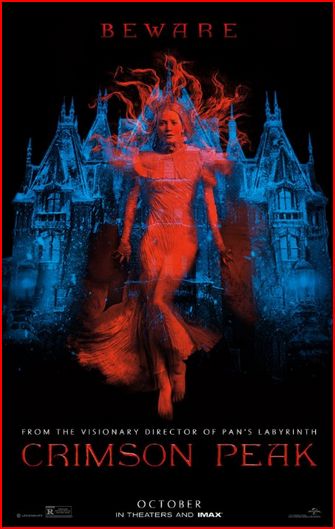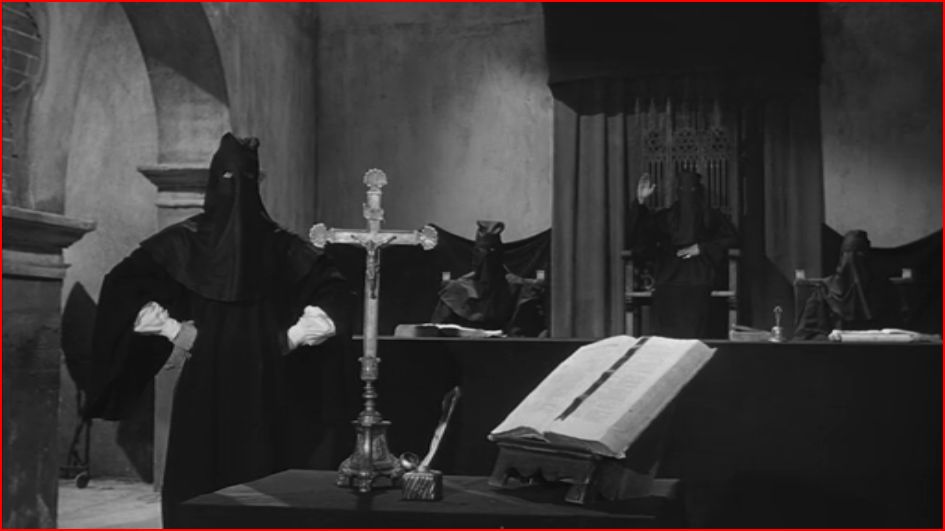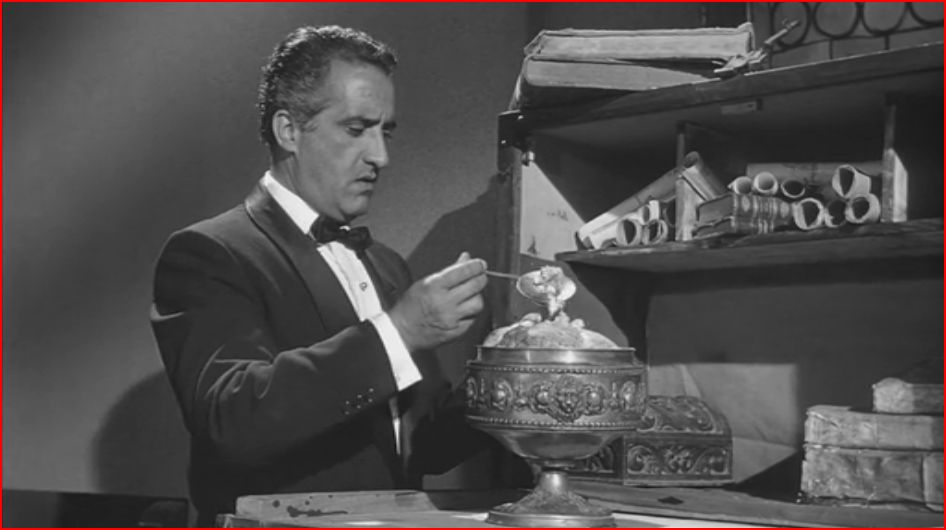

The overall feeling is like Apocalypse Now as a boy's adventure film, or if you prefer, a boy's adventure story in the manner of Apocalypse Now. The boy is Agu, (Abraham Attah), a pre-teen citizen of an unnamed African country. Agu is a bit of a rascal; he and his friends are first seen trying to sell an "Imagination TV," i.e., a hollow console behind which they perform in various genres as one boy changes the theoretical channels. It's a state-of-the-art device; call up the 3-D channel and one boy will dive through the empty picture window, right at you! The punch line comes unexpectedly some time later, when we learn whose TV has been dismembered for this purpose. This early comedy is meant to make the radical change in tone more abrupt and stark.

The enemy is coming. They have a name, but the fact is, there are lots of enemies, lots of militias with a bewildering variety of initials. Is it the People's Front of Judea or the Judean People's Front? None of them are taking prisoners, however, and when one particular militia comes to town Agu's childhood, poor but in some ways idyllic, comes to a violent end. The family is broken up, mother ferried out of town with the youngest child, but while Agu was meant to go along he ends up with his father and brother, both of whom are mowed down by the occupying militia. In the confusion Agu escapes into the jungle, where his chances look bleak.

Agu is recruited into another militia, led by the charismatic Commandant (Idris Elba). He has a way with child soldiers and a way with soldiers in general; we see him lead his men to take a well-guarded bridge with little more than his force of personality. Afterward, he orders Agu to kill his first man, telling him that the sobbing wretch at his feet is one of those who massacred his family. It's unclear whether Agu believes this or whether he just wants to make his pathetic victim shut up. His new pal Strika, hardly older than he, joins in the slaughter as the Commandant watches approvingly.

To Agu the Commandant may look like a conqueror in his own right, but he answers to higher powers, to his own chagrin. After suffering repeated humiliations when summoned by his supreme commander, the Commandant decides to strike out on his own, taking his militia with him, but this proves a foolhardy. In time his spell over Agu and the others is broken, but where can they go from there?...

Abraham Attah makes an impressive debut as Agu, while Idris Elba is impressive as ever as the Commandant. They could be a modern Jim Hawkins and Long John Silver, if the old pirate had fed his boy drugs and demanded sex from him. Some see the Commandant as a new Kurtz, somewhere close to the original heart of darkness of Joseph Conrad's story, but a Kurtz less easily eliminated. Beasts of No Nation may well leave audiences wondering whether "Exterminate all the brutes" isn't the right idea, though that probably isn't the response Fukunaga was hoping for. It really depends on whether he intended the film as a consciousness-raising expose of the wars still ravaging Africa, or as an atrocity exhibition. The apparently deliberate vagueness about its setting subverts any educational purpose Fukunaga may have had. Someone watching this film should want to know why these things are happening, and there really can't be even a hope for a solution unless we have such an understanding. Why are all these groups fighting each other? The only hints we get are the sight of the international businessmen waiting on the Commandant's boss and the sinister, authentic slogan occasionally seen and heard: "It's Our Turn to Eat." Politics in Africa seems to be a zero-sum game of tribes and factions for whom war is a natural extension. But it doesn't take much research to learn that there's more in play than that, and any film set in modern Africa, whatever its source, owes it to its audience to show that something more is going on than generic African savagery. I'm sure Fukunaga didn't mean it this way, but I wouldn't be surprised to see Beasts condemned as a racist film, and the writer-director has himself to blame for not the providing the political context that would refute any essentialist inferences audiences might draw. Fidelity to art may limit Fukunaga's options, since the novel requires us to see everything from a small boy's limited perspective. But the director doesn't help his case with a rather generic approach to war and its horrors. The experience of a child soldier is novelty enough to justify the film, but when the child soldier re-enacts a scene from All Quiet on the Western Front late in the picture some of the necessary novelty is diluted by movie memories. Nor is the ending as inspiring or inflammatory as it could be; instead, the film glides to a gradual stop with a promise that Agu can learn to be a boy again and play like other boys in the surf. Everything's okay, then, if he's going to be all right. There's something inexcusably Hollywood about that, as if the survival of the individual excuses the general horror. By now, though, I think I'm guilty of special pleading against the film. I should make it clear that Beasts of No Nation is a fine, often alarming, sometimes horrific film that should have some impact on viewers, and I recommend that people see it. It ought to make people want to know why such things as they see on screen have happened in Africa, but it will give them very few answers, and by the time it's over audiences' aroused curiosity may have dimmed or died -- and if so, that's a failure.

 I
I









 Last year Moore was given a chance to stick her foot in history's door when a restoration of William A. Seiter's Why Be Good? did the film-society circuit. The title was certainly inviting, suggesting that Moore marched mutely to the beat of the Pre-Code Parade -- mutely because Moore, in a rare move, had retreated to silents (albeit with Vitaphone music tracks) after making her talking, singing debut the year before. I haven't seen her first musicals -- in fact, they're lost films -- so I can't say whether she had good reason to retreat. But I can see how sound may have weighed her down; on the silent screen she has the perky exuberance of the era's clowns. I can also see that Moore was getting a little old, at 30, for her typecast flapper role; Flaming Youth had made her a superstar six years earlier. She tries to make up for that with manic energy. Moore helped popularize the Charleston and Why Be Good? makes much of her dancing, but to the modern eye it looks like she's having a manic conniption fit. She could be trying too hard at this point, but once she's off the dance floor she's much more palatable.
Last year Moore was given a chance to stick her foot in history's door when a restoration of William A. Seiter's Why Be Good? did the film-society circuit. The title was certainly inviting, suggesting that Moore marched mutely to the beat of the Pre-Code Parade -- mutely because Moore, in a rare move, had retreated to silents (albeit with Vitaphone music tracks) after making her talking, singing debut the year before. I haven't seen her first musicals -- in fact, they're lost films -- so I can't say whether she had good reason to retreat. But I can see how sound may have weighed her down; on the silent screen she has the perky exuberance of the era's clowns. I can also see that Moore was getting a little old, at 30, for her typecast flapper role; Flaming Youth had made her a superstar six years earlier. She tries to make up for that with manic energy. Moore helped popularize the Charleston and Why Be Good? makes much of her dancing, but to the modern eye it looks like she's having a manic conniption fit. She could be trying too hard at this point, but once she's off the dance floor she's much more palatable.

 Three months later, Ince and Boyd teamed up again in Lucky Devils (1933). At first it looks like they've picked up where they left off, opening with a violent bank robbery. Something seems off, however; one of the bank's janitors is wearing blackface and proves to be that insufferable stutterer Roscoe Ates. The gun battle is a movie being filmed within the movie, featuring the band of stuntmen whose drinking club gives the show its title. Boyd and William Gargan are the alphas of the group, with Bruce Cabot and Creighton Chaney among the youngsters. The Lucky Devils roster is written in chalk on a speakeasy blackboard; every so often a line's drawn through one of the names. Another youngster, a newlywed, gets crossed out when he botches a car stunt, distracted by his wife's appearance on the set. Marriage is bad news for stuntmen, we're told, yet after this disaster Skipper Clark (Boyd) marries Fran Whitley (Dorothy Wilson). History threatens to repeat itself when Fran can't resist watching as Skipper has to shoot a risky stunt. He must swing across a street to rescue Bob Hughes (Gargan) from a burning building. In the film's most impressive set piece, Skipper freezes at the sight of Fran and swings too late. In an impressive-in-principle effect we see the roof collapse under Gargan and see him plunge into the flames below. Ince is at his best in the immediate aftermath, letting Boyd (or, ironically, his stuntman) dangle back and forth helplessly as the crew rushes to Gargan's aid before others laboriously haul him in. Even if Boyd is doubled, there's a veracity to the spectacle, as well as emotion without emoting as Boyd's predicament illustrates his guilty anxiety over his friend's fate. Bob Hughes proves a lucky devil after all, but a guilt-stricken Skipper quits the business, only to find job-hunting at the trough of the Depression just as demoralizing. He finally takes work as a menial member of a film crew, stuck on location while Fran faces a dangerous labor. In perfect melodramatic fashion, an opportunity for redemption arises that will also earn Skipper they money necessary to get proper hospital care for Fran. His dangerous trip over some rapids is overshadowed by a frantic race back home from the set, much of it in a stolen police motorcycle, the leads to a genuinely funny anticlimax. Again Ince proves adept at brisk storytelling. At 70 minutes Lucky Devils is epic in length compared to the 58-minute Men of America, but by modern standards its brief without seeming abrupt, a lean and mean storytelling machine. Alas, once I read more about Ince I found retroactive foreshadowing in Lucky Devils, since he, like one of his fictional stuntmen, died in a car wreck, aged only 50 and only four years after making this picture. He'd moved to Britain -- Lucky Devils was his last American film -- and seemingly had plenty of movies left in him. In fact, there's plenty of movies left to see out of Ince's 137 directing credits, and I'll be interested to see how many measure up to the two I've seen.
Three months later, Ince and Boyd teamed up again in Lucky Devils (1933). At first it looks like they've picked up where they left off, opening with a violent bank robbery. Something seems off, however; one of the bank's janitors is wearing blackface and proves to be that insufferable stutterer Roscoe Ates. The gun battle is a movie being filmed within the movie, featuring the band of stuntmen whose drinking club gives the show its title. Boyd and William Gargan are the alphas of the group, with Bruce Cabot and Creighton Chaney among the youngsters. The Lucky Devils roster is written in chalk on a speakeasy blackboard; every so often a line's drawn through one of the names. Another youngster, a newlywed, gets crossed out when he botches a car stunt, distracted by his wife's appearance on the set. Marriage is bad news for stuntmen, we're told, yet after this disaster Skipper Clark (Boyd) marries Fran Whitley (Dorothy Wilson). History threatens to repeat itself when Fran can't resist watching as Skipper has to shoot a risky stunt. He must swing across a street to rescue Bob Hughes (Gargan) from a burning building. In the film's most impressive set piece, Skipper freezes at the sight of Fran and swings too late. In an impressive-in-principle effect we see the roof collapse under Gargan and see him plunge into the flames below. Ince is at his best in the immediate aftermath, letting Boyd (or, ironically, his stuntman) dangle back and forth helplessly as the crew rushes to Gargan's aid before others laboriously haul him in. Even if Boyd is doubled, there's a veracity to the spectacle, as well as emotion without emoting as Boyd's predicament illustrates his guilty anxiety over his friend's fate. Bob Hughes proves a lucky devil after all, but a guilt-stricken Skipper quits the business, only to find job-hunting at the trough of the Depression just as demoralizing. He finally takes work as a menial member of a film crew, stuck on location while Fran faces a dangerous labor. In perfect melodramatic fashion, an opportunity for redemption arises that will also earn Skipper they money necessary to get proper hospital care for Fran. His dangerous trip over some rapids is overshadowed by a frantic race back home from the set, much of it in a stolen police motorcycle, the leads to a genuinely funny anticlimax. Again Ince proves adept at brisk storytelling. At 70 minutes Lucky Devils is epic in length compared to the 58-minute Men of America, but by modern standards its brief without seeming abrupt, a lean and mean storytelling machine. Alas, once I read more about Ince I found retroactive foreshadowing in Lucky Devils, since he, like one of his fictional stuntmen, died in a car wreck, aged only 50 and only four years after making this picture. He'd moved to Britain -- Lucky Devils was his last American film -- and seemingly had plenty of movies left in him. In fact, there's plenty of movies left to see out of Ince's 137 directing credits, and I'll be interested to see how many measure up to the two I've seen.





